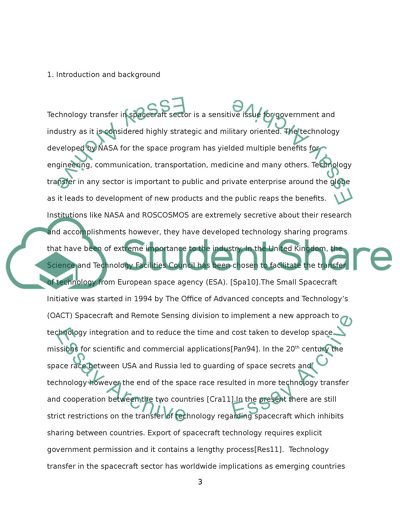Cite this document
(Technology Transfer in the Spacecraft Sector of the Aeronautical Indus Research Proposal, n.d.)
Technology Transfer in the Spacecraft Sector of the Aeronautical Indus Research Proposal. https://studentshare.org/engineering-and-construction/1747552-technology-transfer-in-spacecraft-sector-of-aerospace-industry
Technology Transfer in the Spacecraft Sector of the Aeronautical Indus Research Proposal. https://studentshare.org/engineering-and-construction/1747552-technology-transfer-in-spacecraft-sector-of-aerospace-industry
(Technology Transfer in the Spacecraft Sector of the Aeronautical Indus Research Proposal)
Technology Transfer in the Spacecraft Sector of the Aeronautical Indus Research Proposal. https://studentshare.org/engineering-and-construction/1747552-technology-transfer-in-spacecraft-sector-of-aerospace-industry.
Technology Transfer in the Spacecraft Sector of the Aeronautical Indus Research Proposal. https://studentshare.org/engineering-and-construction/1747552-technology-transfer-in-spacecraft-sector-of-aerospace-industry.
“Technology Transfer in the Spacecraft Sector of the Aeronautical Indus Research Proposal”. https://studentshare.org/engineering-and-construction/1747552-technology-transfer-in-spacecraft-sector-of-aerospace-industry.


